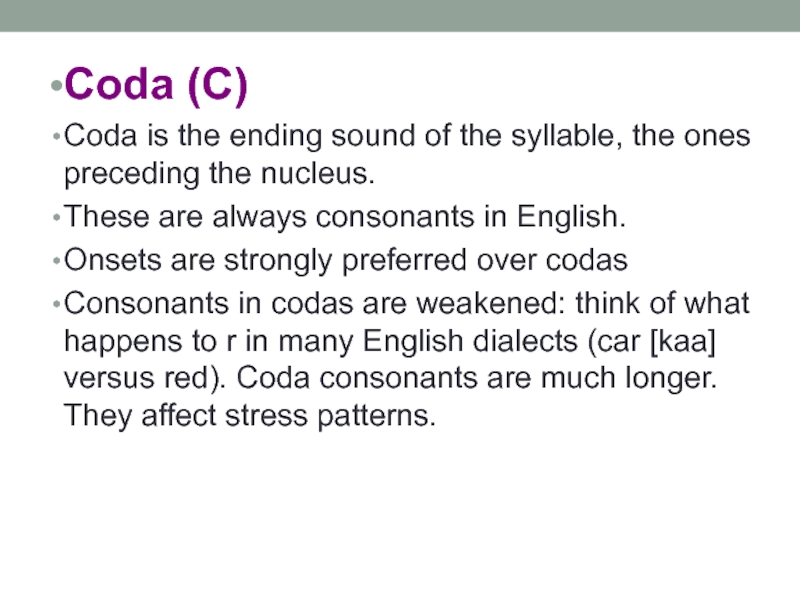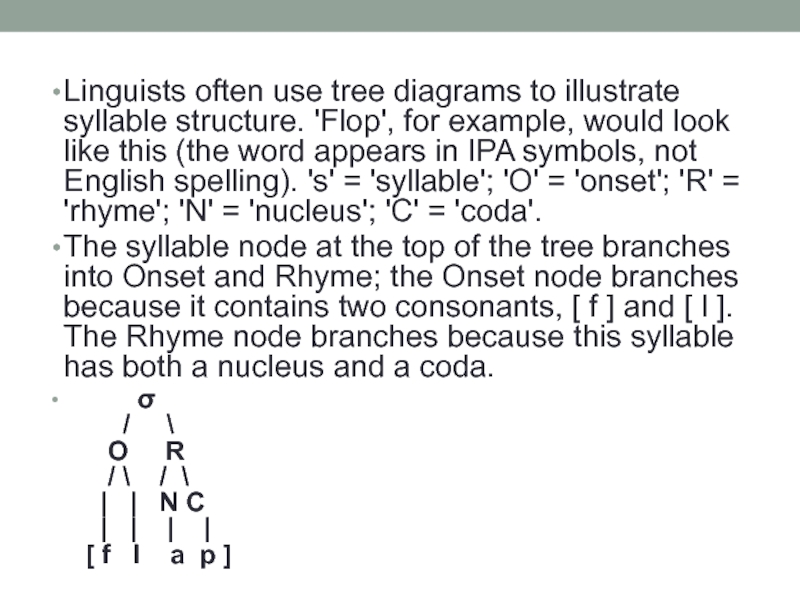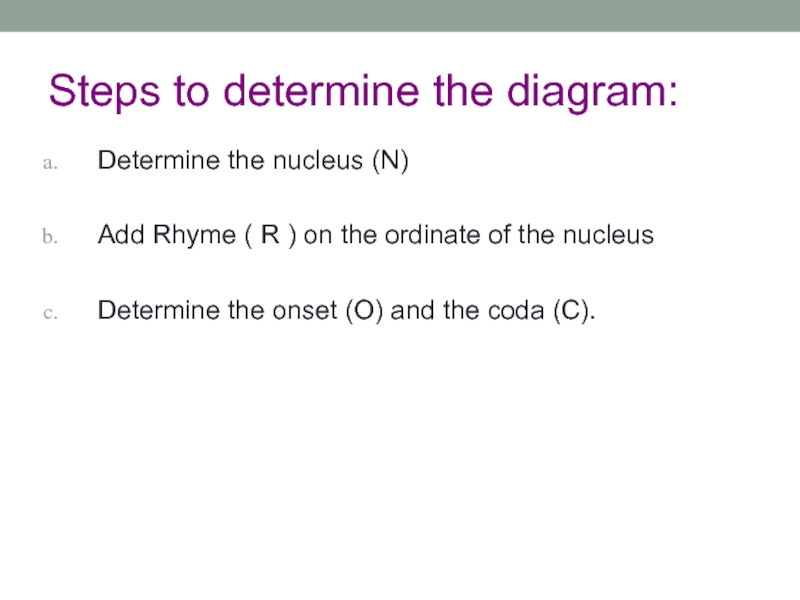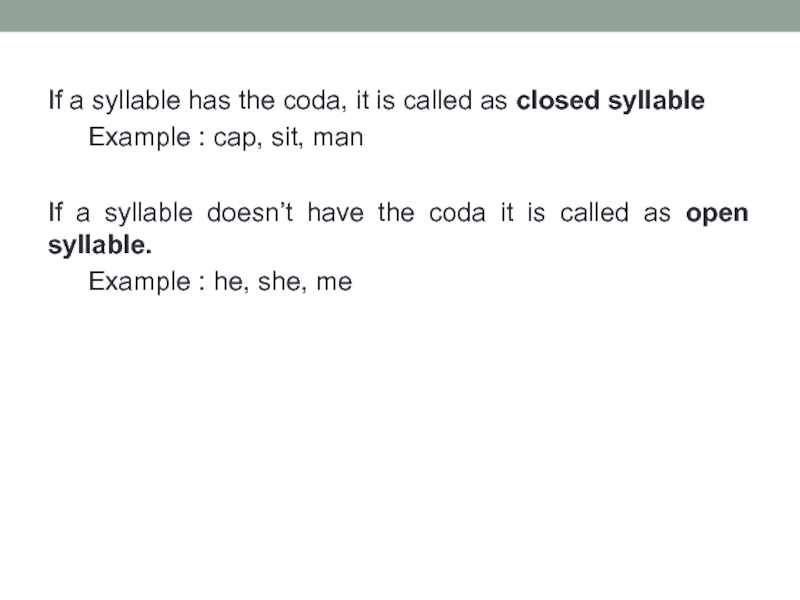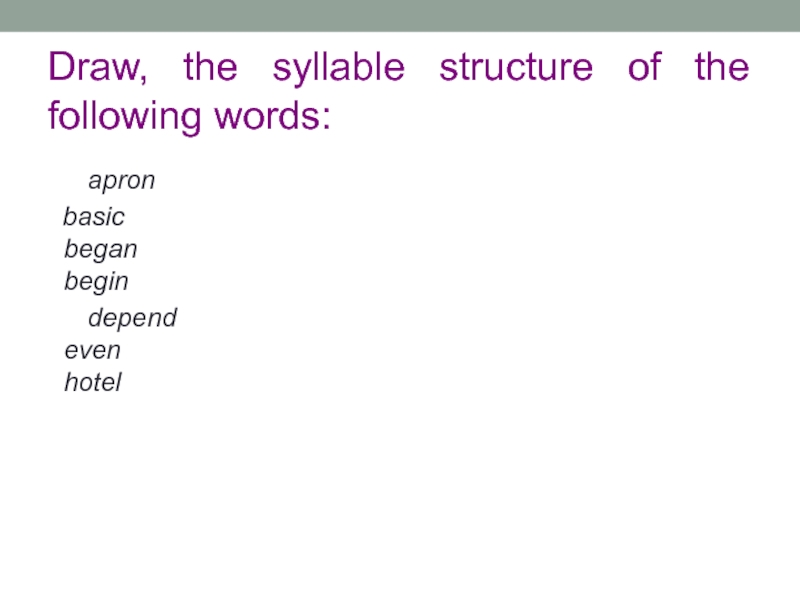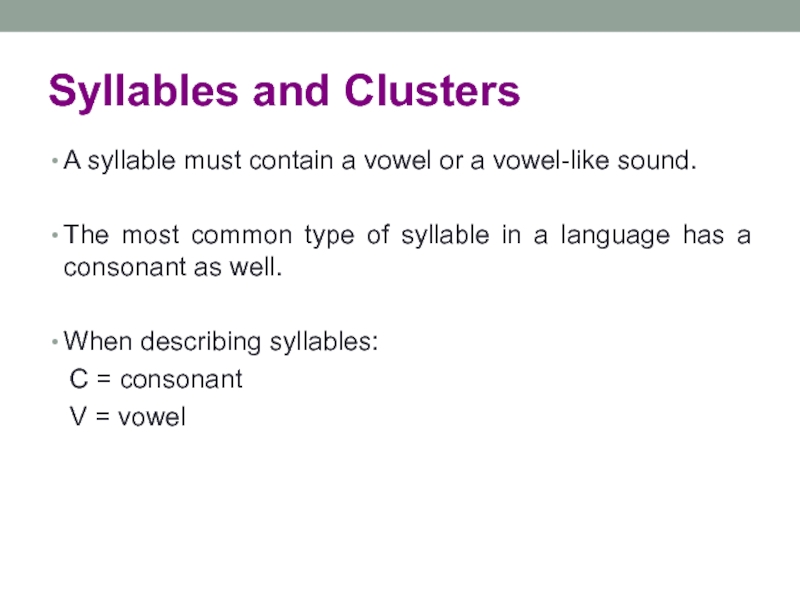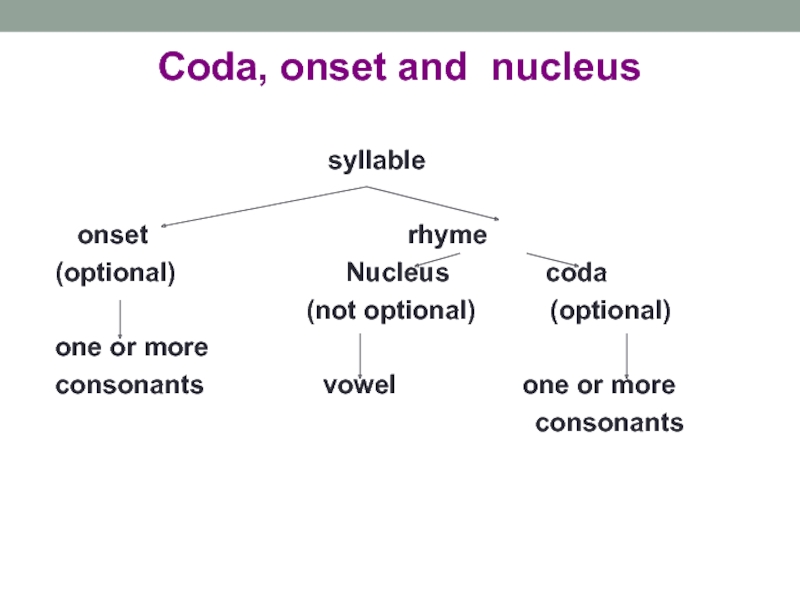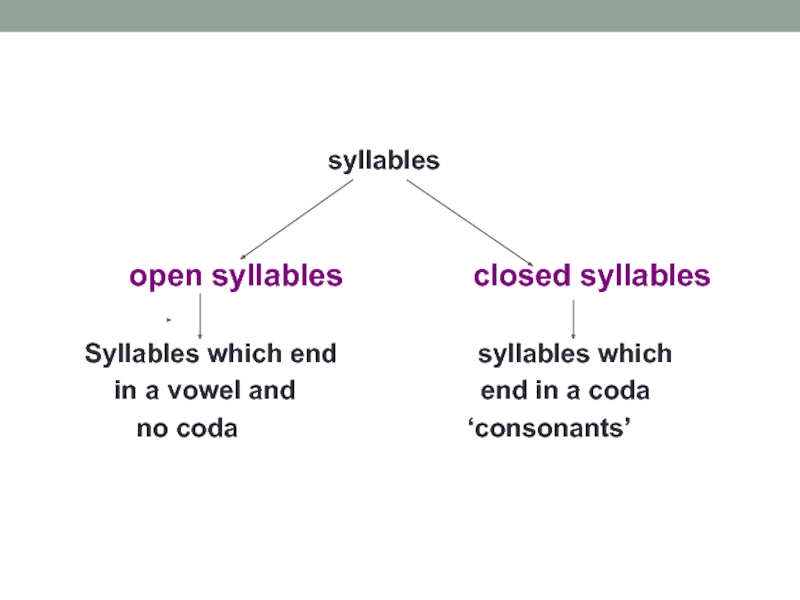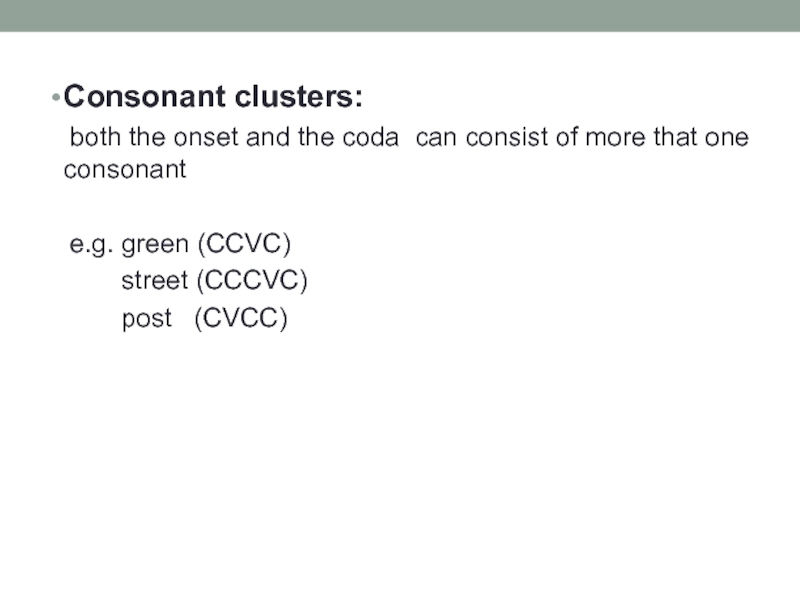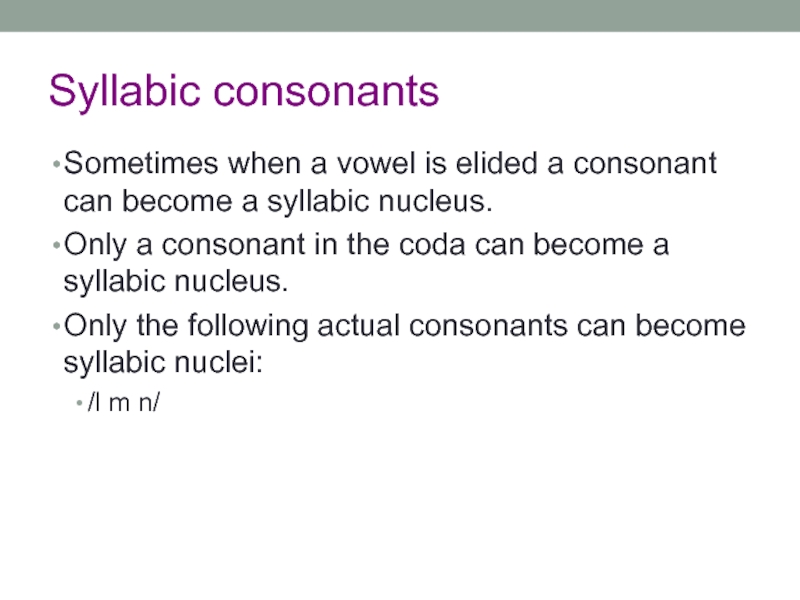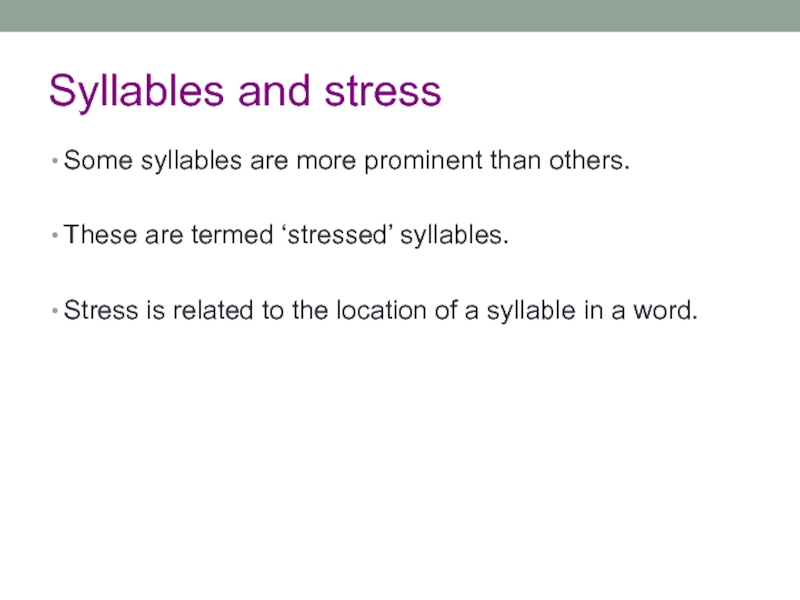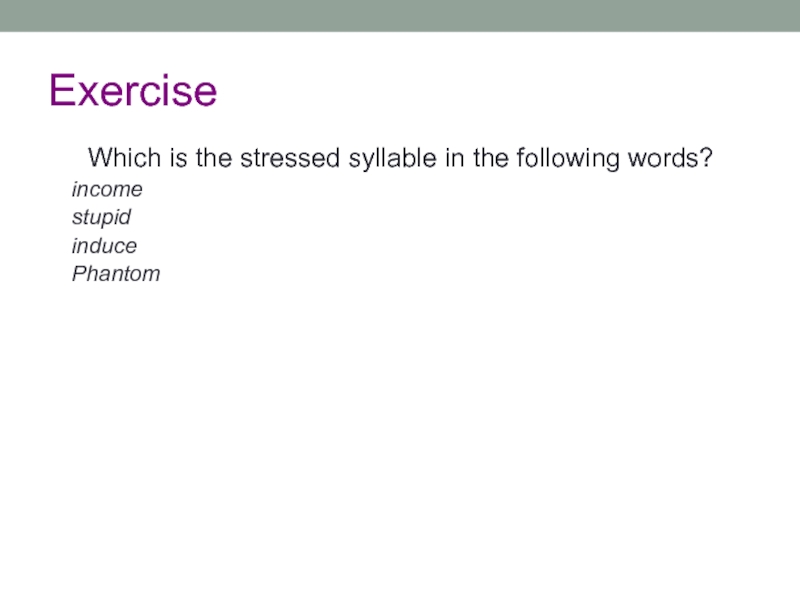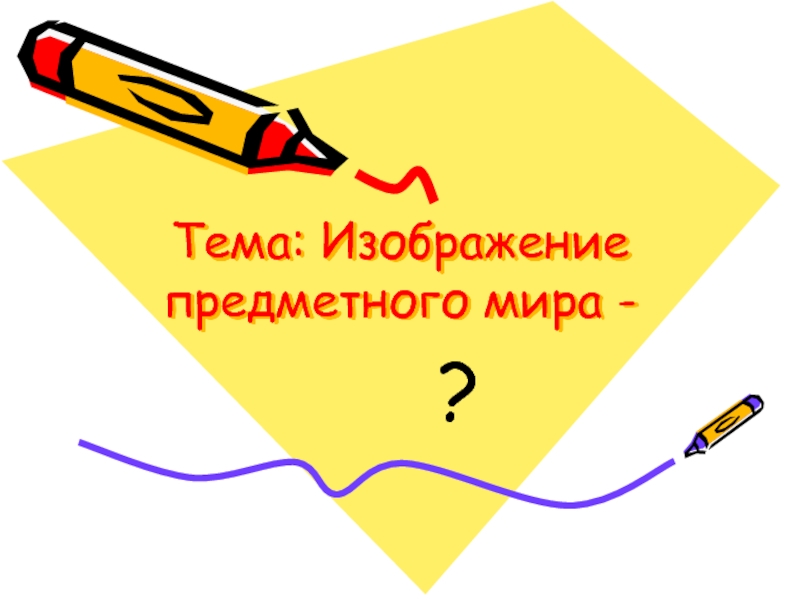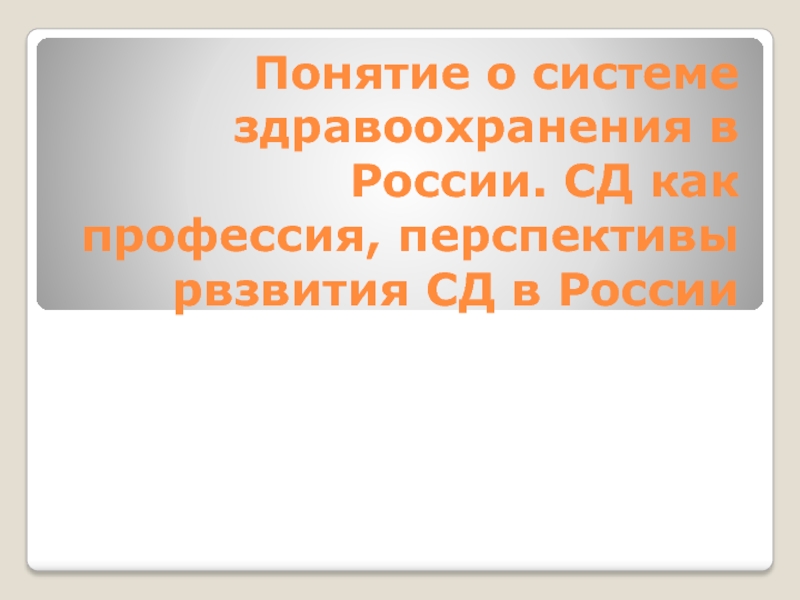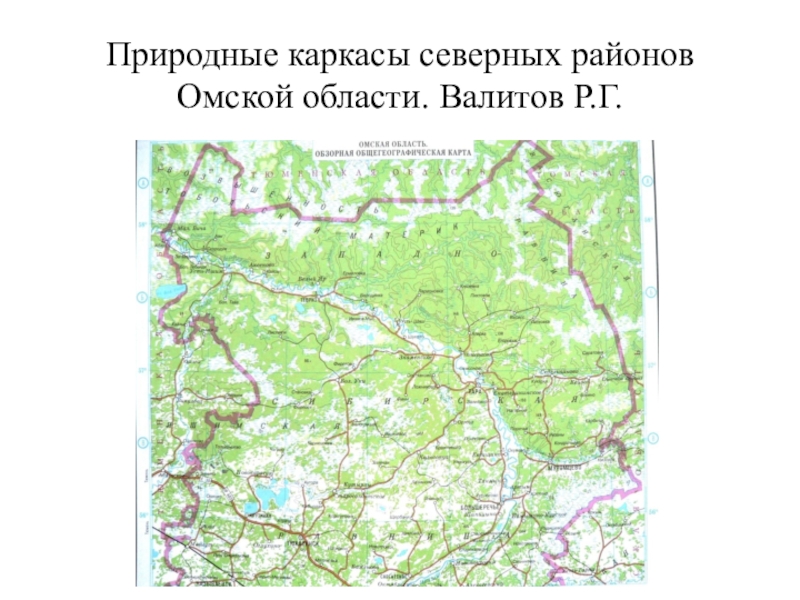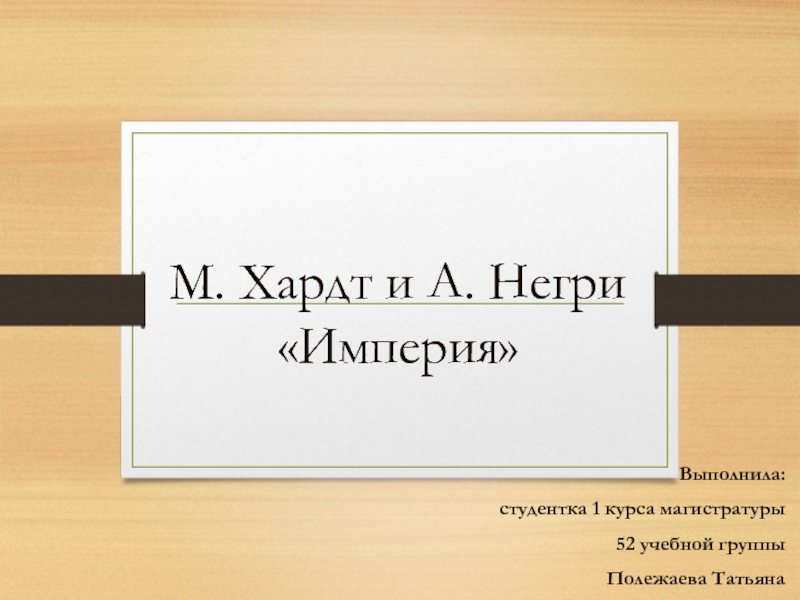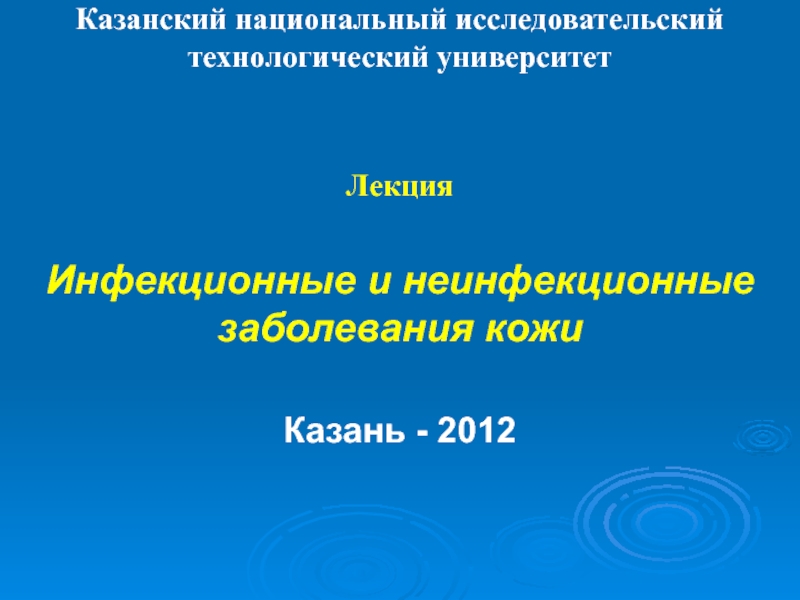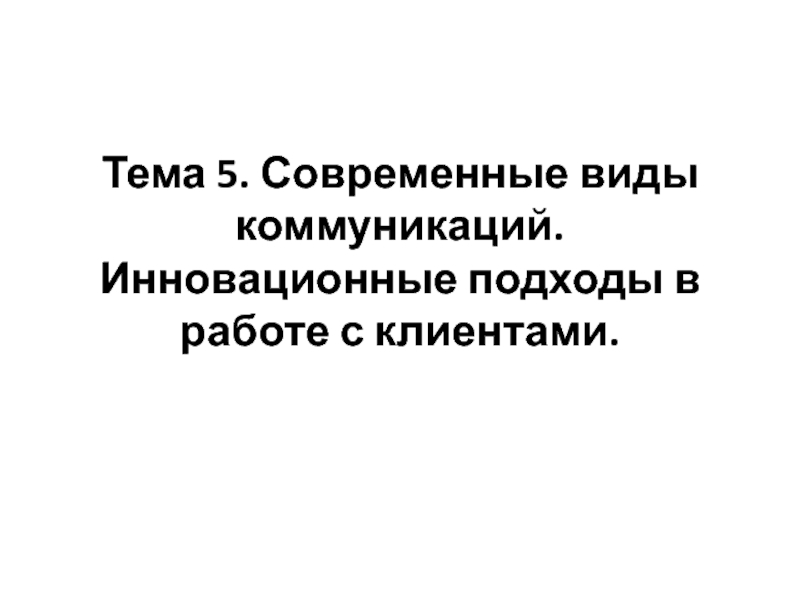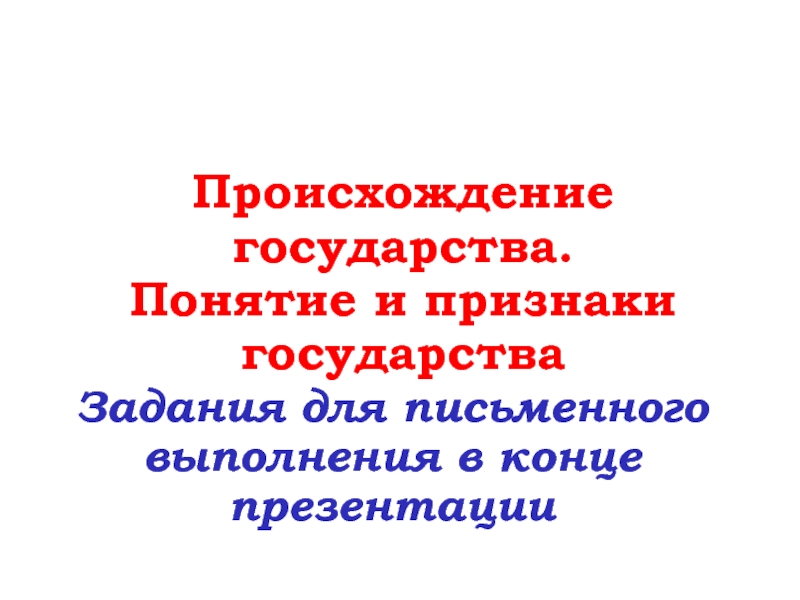Слайд 2Words can be cut up into units called syllables.
Syllable
is a unit of spoken language consisting of a single
uninterrupted sound.
Humans seem to need syllables as a way of segmenting the stream of speech and giving it a rhythm of strong and weak beats.
Syllables exist only to make speech easier for the brain to process.
A word contains at least one syllable.
Слайд 3Determine how many syllables are in the following words:
Emily
Trevor
Suzy
Restroom
Recess
Book
Environment
Слайд 4Syllables and their parts
The parts are onset and rhyme; within the rhyme
we find the nucleus and coda.
Not all syllables have all parts; the
smallest possible syllable contains a nucleus only.
A syllable may or may not have an onset and a coda.
Слайд 5Onset (O)
Onset: the beginning sounds of the syllable; the ones
preceding the nucleus.
These are always consonants in English. The
nucleus is a vowel in most cases, although the consonants [ r ], [ l ], [ m ], [ n ], and the velar nasal (the 'ng' sound) can also be the nucleus of a syllable.
Слайд 6Rhyme (R)
Rhyme (or rime): the rest of the syllable, after the onset
(the underlined portions of the words above). The rhyme can
also be divided up:
Rhyme = nucleus + coda
Слайд 7Nucleus (N)
is the core or essential part of a syllable.
A nucleus must be present in order for a syllable
to be present.
In English and most other languages, most syllable nuclei are vowels.
The English liquids [ r l ] and the nasals [ m n ] can be the nuclei of syllables under certain conditions. [ r ] can be a nucleus as easily as a vowel, in any position: the words 'bird', have [ r ] as the nucleus; in other words, there is no vowel in the pronunciation of these syllables, even though they have one in the spelling.
[brd]
Слайд 8[ l ] and the nasals [ m n ]
become syllable nuclei when they follow an alveolar consonant in
the last syllable of a word. This happens in the relaxed or casual rather than very formal articulation of the word. Compare casual vs. formal pronunciations of 'button', 'bottle', 'bottom'.
Слайд 9Coda (C)
Coda is the ending sound of the syllable, the
ones preceding the nucleus.
These are always consonants in English.
Onsets
are strongly preferred over codas
Consonants in codas are weakened: think of what happens to r in many English dialects (car [kaa] versus red). Coda consonants are much longer. They affect stress patterns.
Слайд 10Linguists often use tree diagrams to illustrate syllable structure. 'Flop',
for example, would look like this (the word appears in
IPA symbols, not English spelling). 's' = 'syllable'; 'O' = 'onset'; 'R' = 'rhyme'; 'N' = 'nucleus'; 'C' = 'coda'.
The syllable node at the top of the tree branches into Onset and Rhyme; the Onset node branches because it contains two consonants, [ f ] and [ l ]. The Rhyme node branches because this syllable has both a nucleus and a coda.
σ
/ \
O R
/ \ / \
| | N C
| | | |
[ f l a p ]
Слайд 11Steps to determine the diagram:
Determine the nucleus (N)
Add Rhyme
( R ) on the ordinate of the nucleus
Determine
the onset (O) and the coda (C).
Слайд 12If a syllable has the coda, it is called as
closed syllable
Example : cap, sit, man
If a syllable doesn’t
have the coda it is called as open syllable.
Example : he, she, me
Слайд 13Draw, the syllable structure of the following words:
apron
basic
began
begin
depend
even
hotel
Слайд 14Syllables and Clusters
A syllable must contain a vowel or a
vowel-like sound.
The most common type of syllable in a
language has a consonant as well.
When describing syllables:
C = consonant
V = vowel
Слайд 15Coda, onset and nucleus
syllable
onset rhyme
(optional) Nucleus coda
(not optional) (optional)
one or more
consonants vowel one or more
consonants
syllables
open syllables closed syllables
Syllables which end syllables which
in a vowel and end in a coda
no coda ‘consonants’
Слайд 17Consonant clusters:
both the onset and the coda
can consist of more that one consonant
e.g. green
(CCVC)
street (CCCVC)
post (CVCC)
Слайд 18Syllabic consonants
Sometimes when a vowel is elided a consonant can
become a syllabic nucleus.
Only a consonant in the coda can
become a syllabic nucleus.
Only the following actual consonants can become syllabic nuclei:
/l m n/
Слайд 19Syllables and stress
Some syllables are more prominent than others.
These are
termed ‘stressed’ syllables.
Stress is related to the location of a
syllable in a word.
Слайд 20Exercise
Which is the stressed syllable in the following words?
income
stupid
induce
Phantom
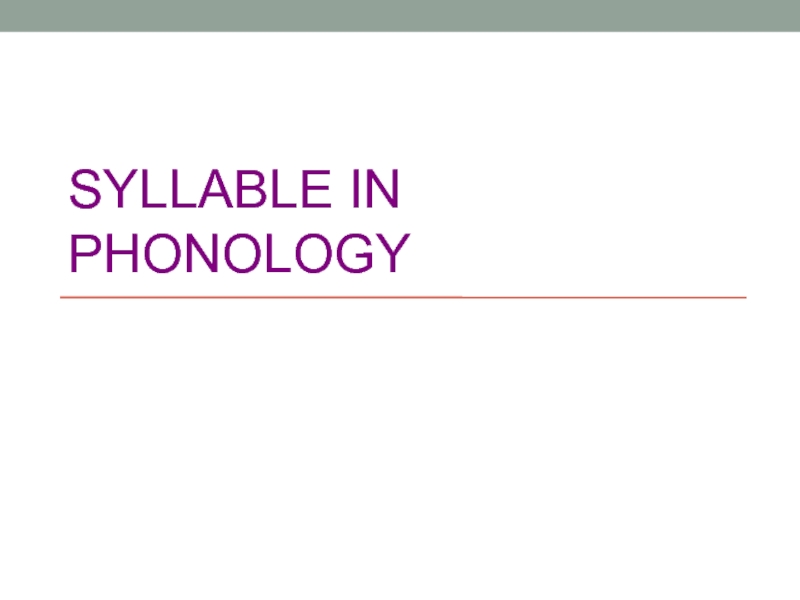
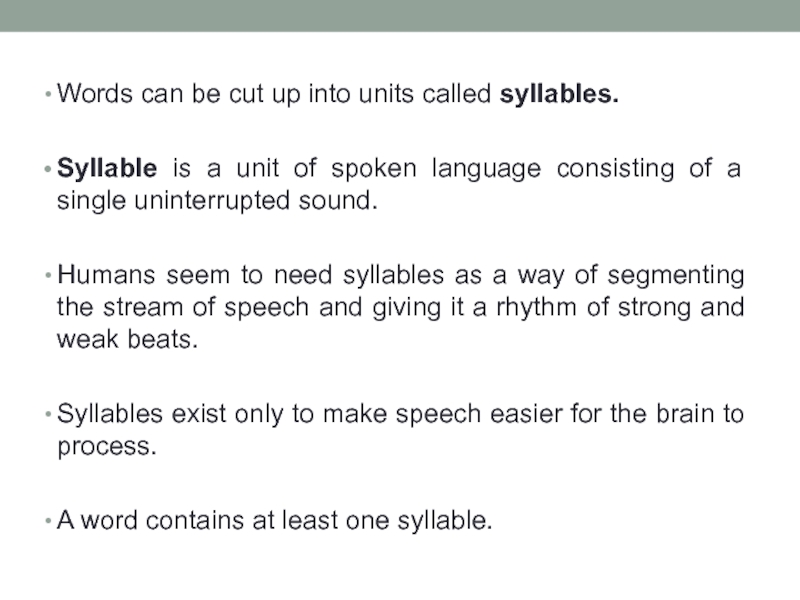
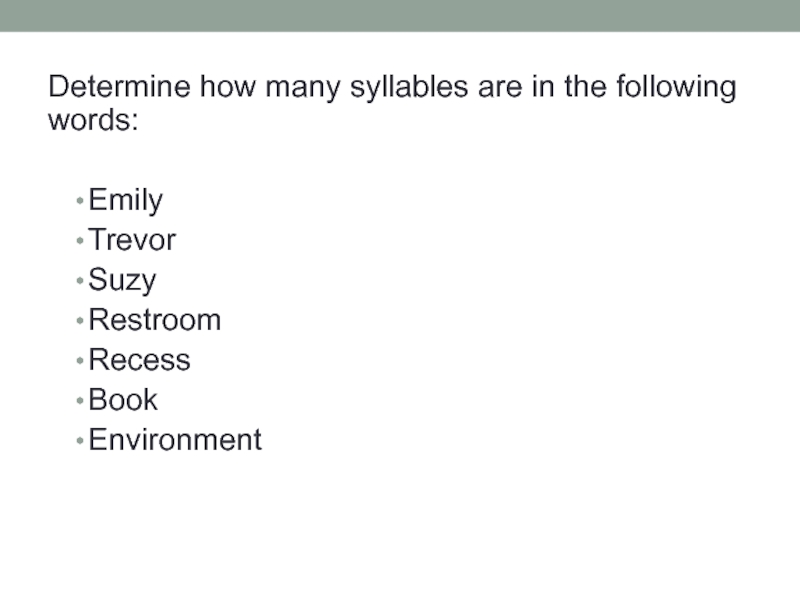
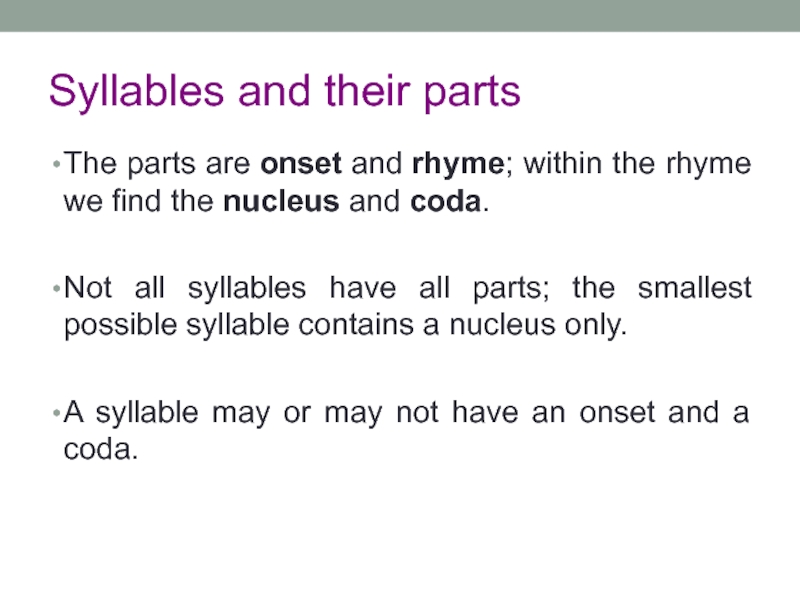
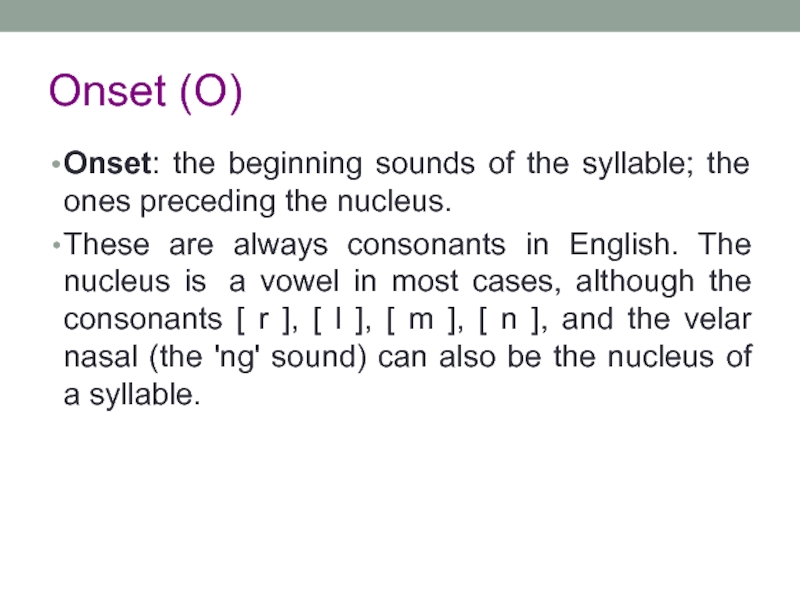
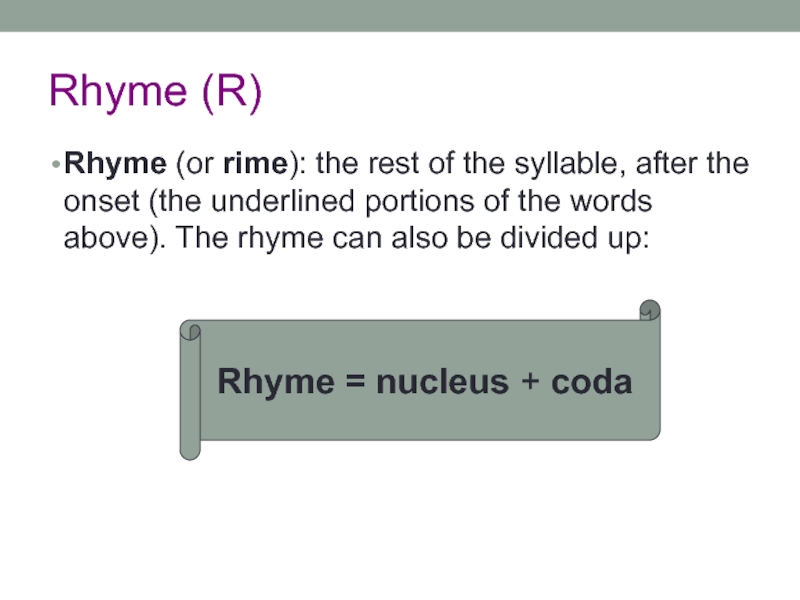
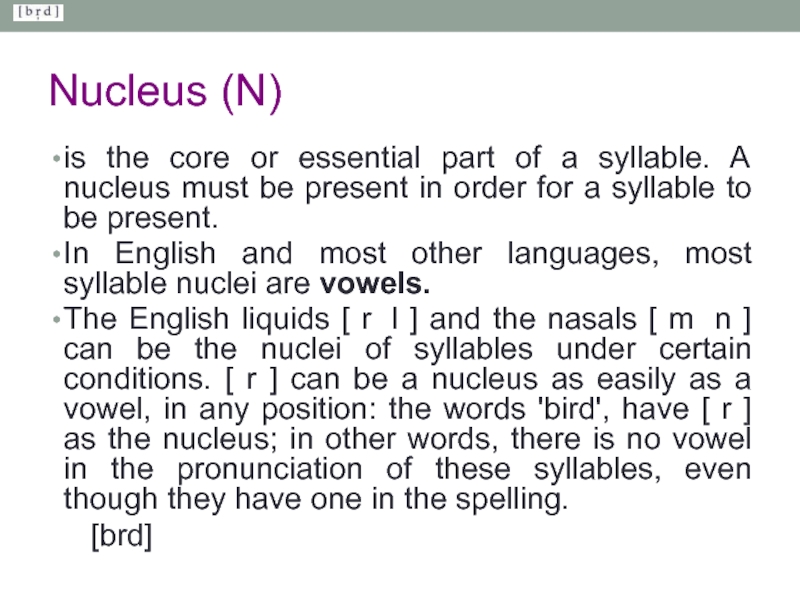
![Syllables [ l ] and the nasals [ m n ] become [ l ] and the nasals [ m n ] become syllable nuclei when they follow an](/img/thumbs/242cc9648f74bf6b606313a93a0884cb-800x.jpg)
